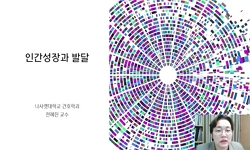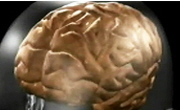This thesis is a study to compare femininity of human figures represented in the historical description of North and South Korea, to identify the different historical viewpoints and women' s viewpoints of both sides, and to discuss ways of unification...
http://chineseinput.net/에서 pinyin(병음)방식으로 중국어를 변환할 수 있습니다.
변환된 중국어를 복사하여 사용하시면 됩니다.
- 中文 을 입력하시려면 zhongwen을 입력하시고 space를누르시면됩니다.
- 北京 을 입력하시려면 beijing을 입력하시고 space를 누르시면 됩니다.
https://www.riss.kr/link?id=T15010473
- 저자
-
발행사항
서울 : 연세대학교 교육대학원, 2019
-
학위논문사항
학위논문(석사) -- 연세대학교 교육대학원 , 역사교육전공 , 2019.2
-
발행연도
2019
-
작성언어
한국어
- 주제어
-
발행국(도시)
서울
-
기타서명
Representation of femininity of North and South Korea, unification-oriented women's history education
-
형태사항
ⅲ, 79장 : 삽화 ; 26 cm
-
일반주기명
지도교수: 김성보
-
UCI식별코드
I804:11046-000000519512
- 소장기관
-
0
상세조회 -
0
다운로드
부가정보
다국어 초록 (Multilingual Abstract)

As a result of analyzing the types and narrative patterns of female characters that North and South Korea pay attention to, the common goal of women 's image was categorized as ① patriot who has entered the struggle for anti-colonialism ② person who is devoted to the family ③ artist who has left her name by talent ④ a pioneer who contributed to social development. However, in these common types, the female characters that the two Koreas regard as representative of each other and the feminism that the historical model implies differed.
The female character that South Korea often refers to in history education was a pioneer who exerted a great deal of individual ability. Although these narrative patterns reflect the modern view of women, it is nothing more than supplementing in the form of 'mentioning' and 'inserting' some women 'famous people' in the male - centered political narrative description which is regarded as the 'universal' without intrinsic consideration of gender education in history subjects. Also, there is a limit to be confined to the framework of 'feminine' and 'femininity' defined and interpreted by conventional male biased norms.
On the other hand, the North Korean narrative method is meaningful in that it selects a wide range of female characters in the class and activity space and finds 'subjectivity' in it. At the same time, however, there is a tendency to emphasize the exceptional characters who acted as 'as much as men' as 'masculine'. It makes the so-called male culture be used as a standard in order for women to become mainstream, and form distorted perceptions of acting as a man in the domain of men is productive and contributes to the nation and society.
For women's history education, which aims for unification First, we must identify the characters that were excluded by the divided system and ideology of the two Koreas. In particular, it is necessary to consider that the two Koreas have selected and excluded people according to their region and legitimacy (ideology).
Second, due to the division, women’s femininity of North and South Korea, which have been heterogeneous for a long time, should be narrowed down to a unified direction by taking mutually positive narrative patterns and complementing the negative ones. As a result, it is necessary to point out the limit of the historical context and the age, and to present a multi-faceted female image that meets the demands of the modern age through various representations.
In short, it should be remembered that unification is not merely a matter of physical territory, state institution, or system, but eventually a long-term heterogeneous group meets and converges 'humanity' in it. In that process, women should exist as one of the subjective 'humans' who have lived in history, not as good house wife or honorary men. In order to realize this, it is necessary to solve the issue of rearranging the history curriculum and the contents selection and organization of the subject from the viewpoint of women and unification.
This thesis is a study to compare femininity of human figures represented in the historical description of North and South Korea, to identify the different historical viewpoints and women' s viewpoints of both sides, and to discuss ways of unification-oriented women's history education. North and South Korea have experienced a conflicting political and economic social system while having a common cultural and historical background. This difference can broaden the horizon of recognition and present a balanced view of history in identifying differences in other dimensions such as gender.
As a result of analyzing the types and narrative patterns of female characters that North and South Korea pay attention to, the common goal of women 's image was categorized as ① patriot who has entered the struggle for anti-colonialism ② person who is devoted to the family ③ artist who has left her name by talent ④ a pioneer who contributed to social development. However, in these common types, the female characters that the two Koreas regard as representative of each other and the feminism that the historical model implies differed.
The female character that South Korea often refers to in history education was a pioneer who exerted a great deal of individual ability. Although these narrative patterns reflect the modern view of women, it is nothing more than supplementing in the form of 'mentioning' and 'inserting' some women 'famous people' in the male - centered political narrative description which is regarded as the 'universal' without intrinsic consideration of gender education in history subjects. Also, there is a limit to be confined to the framework of 'feminine' and 'femininity' defined and interpreted by conventional male biased norms.
On the other hand, the North Korean narrative method is meaningful in that it selects a wide range of female characters in the class and activity space and finds 'subjectivity' in it. At the same time, however, there is a tendency to emphasize the exceptional characters who acted as 'as much as men' as 'masculine'. It makes the so-called male culture be used as a standard in order for women to become mainstream, and form distorted perceptions of acting as a man in the domain of men is productive and contributes to the nation and society.
For women's history education, which aims for unification First, we must identify the characters that were excluded by the divided system and ideology of the two Koreas. In particular, it is necessary to consider that the two Koreas have selected and excluded people according to their region and legitimacy (ideology).
Second, due to the division, women’s femininity of North and South Korea, which have been heterogeneous for a long time, should be narrowed down to a unified direction by taking mutually positive narrative patterns and complementing the negative ones. As a result, it is necessary to point out the limit of the historical context and the age, and to present a multi-faceted female image that meets the demands of the modern age through various representations.
In short, it should be remembered that unification is not merely a matter of physical territory, state institution, or system, but eventually a long-term heterogeneous group meets and converges 'humanity' in it. In that process, women should exist as one of the subjective 'humans' who have lived in history, not as good house wife or honorary men. In order to realize this, it is necessary to solve the issue of rearranging the history curriculum and the contents selection and organization of the subject from the viewpoint of women and unification.
남북한이 주목하는 여성인물의 유형과 서술양태 등을 분석한 결과, 공통적으로 지향하는 여성상은 ①반침략 민족 투쟁에 뛰어든 애국자, ②가정 내 헌신하는 내조자 ③재능으로 이름을 남긴 예술가 ④남성의 영역에서 사회발전에 기여한 개척자로 범주화할 수 있었다. 그러나 이러한 공통된 유형에서 남북이 각각 대표로 여기는 여성인물과 그 역사적 모델이 내포하는 여성성은 차이를 보였다.
남한이 흔히 역사교육에서 ‘언급’하는 여성인물은 주로 개인의 역량을 아낌없이 발휘한 선구자격의 인물이었다. 이러한 서술양태는 현대적 관점의 여성상을 반영한다는 의의가 있으나, 역사과목 안에서 성별(gender)교육에 관한 본질적인 숙고 없이 기존의 ‘보편’으로 간주되는 남성중심의 정치사 서술에 일부 여성 ‘명사’(名士)를 ‘언급’과 ‘삽입’하는 형태로 보충하는 것에 지나지 않는다. 또한 종래 남성 편향적인 규준에 의하여 정의되고 해석된 ‘여성적’, ‘여성성’의 틀에 갇힌다는 한계가 있다.
한편 북한의 서술방식은 계급·활동공간에 있어 폭넓은 여성인물을 선정하고 그 안에서 ‘주체성’을 발견한다는 점에서 의의가 있다. 그러나 동시에 지나치게 ‘남성만큼’, ‘남성적’으로 활약했던 예외적 인물을 강조하는 경향이 있다. 이는 여성이 주류가 되기 위해서는 소위 남성의 문화를 표준으로 삼고 남성의 영역에서 남성처럼 행위하는 것이 생산적이며 국가와 사회에 기여하는 것이라는 왜곡된 인식을 심어줄 수 있다.
통일을 지향하는 여성사 교육을 위해서는 첫째, 일차적으로 남북의 분단된 체제와 이념에 의해 배제되었던 인물들을 발굴해야 한다. 특히 북한과 남한은 지역에 따라, 그리고 정통성(이념)에 따라 인물을 선정·제외하였다는 점을 고려할 필요가 있다. 둘째, 분단으로 인해 상당시간 이질화된 남과 북의 여성성을, 상호 긍정적인 서술양태는 취하고 부정적인 부분은 보완하면서 통일된 방향으로 좁혀나가야 한다. 결과적으로 역사적 맥락과 시대의 한계를 지적하면서 다양한 표상을 통해 현대라는 시대적 요구에 걸 맞는 다면적인 여성상을 제시할 필요가 있다.
요컨대 통일은 단순히 물리적인 영토나 제도, 시스템만의 문제가 아니라, 결국 오랜 기간 이질화된 집단이 서로 만나 그 안에 존재하는 ‘인간성’이 수렴하는 것임을 명심해야 할 것이다. 그리고 그 과정에서 여성은 현모양처나 명예남성이 아닌 역사를 살아간 주체적인 ‘인간’중 한 명으로서 존재해야한다. 이를 실현하기 위해서는 차후에 역사 교육과정과 교과의 내용 선정 및 조직을 여성과 통일의 관점에서 실질적으로 재편하는 문제를 풀어나가야 할 것이다.
이 글은 남북한의 역사서술에 나타난 인물 표상의 여성성을 비교·분석하면서 양측의 서로 다른 역사관과 여성관을 동시에 파악하고, 통일을 지향하는 여성사 교육의 방안에 대해 논의한 연...
이 글은 남북한의 역사서술에 나타난 인물 표상의 여성성을 비교·분석하면서 양측의 서로 다른 역사관과 여성관을 동시에 파악하고, 통일을 지향하는 여성사 교육의 방안에 대해 논의한 연구이다. 남한과 북한은 공통된 문화적, 역사적 배경을 가지면서도 그 동안 상반된 정치경제적 사회체제를 경험해왔다. 이러한 차이는 오히려 성차(gender)와 같은 다른 차원의 차이를 규명함에 있어서 인식의 지평을 넓히고 균형 있는 역사관을 제시할 수 있다는 점에서 본 연구를 진행하였다.
남북한이 주목하는 여성인물의 유형과 서술양태 등을 분석한 결과, 공통적으로 지향하는 여성상은 ①반침략 민족 투쟁에 뛰어든 애국자, ②가정 내 헌신하는 내조자 ③재능으로 이름을 남긴 예술가 ④남성의 영역에서 사회발전에 기여한 개척자로 범주화할 수 있었다. 그러나 이러한 공통된 유형에서 남북이 각각 대표로 여기는 여성인물과 그 역사적 모델이 내포하는 여성성은 차이를 보였다.
남한이 흔히 역사교육에서 ‘언급’하는 여성인물은 주로 개인의 역량을 아낌없이 발휘한 선구자격의 인물이었다. 이러한 서술양태는 현대적 관점의 여성상을 반영한다는 의의가 있으나, 역사과목 안에서 성별(gender)교육에 관한 본질적인 숙고 없이 기존의 ‘보편’으로 간주되는 남성중심의 정치사 서술에 일부 여성 ‘명사’(名士)를 ‘언급’과 ‘삽입’하는 형태로 보충하는 것에 지나지 않는다. 또한 종래 남성 편향적인 규준에 의하여 정의되고 해석된 ‘여성적’, ‘여성성’의 틀에 갇힌다는 한계가 있다.
한편 북한의 서술방식은 계급·활동공간에 있어 폭넓은 여성인물을 선정하고 그 안에서 ‘주체성’을 발견한다는 점에서 의의가 있다. 그러나 동시에 지나치게 ‘남성만큼’, ‘남성적’으로 활약했던 예외적 인물을 강조하는 경향이 있다. 이는 여성이 주류가 되기 위해서는 소위 남성의 문화를 표준으로 삼고 남성의 영역에서 남성처럼 행위하는 것이 생산적이며 국가와 사회에 기여하는 것이라는 왜곡된 인식을 심어줄 수 있다.
통일을 지향하는 여성사 교육을 위해서는 첫째, 일차적으로 남북의 분단된 체제와 이념에 의해 배제되었던 인물들을 발굴해야 한다. 특히 북한과 남한은 지역에 따라, 그리고 정통성(이념)에 따라 인물을 선정·제외하였다는 점을 고려할 필요가 있다. 둘째, 분단으로 인해 상당시간 이질화된 남과 북의 여성성을, 상호 긍정적인 서술양태는 취하고 부정적인 부분은 보완하면서 통일된 방향으로 좁혀나가야 한다. 결과적으로 역사적 맥락과 시대의 한계를 지적하면서 다양한 표상을 통해 현대라는 시대적 요구에 걸 맞는 다면적인 여성상을 제시할 필요가 있다.
요컨대 통일은 단순히 물리적인 영토나 제도, 시스템만의 문제가 아니라, 결국 오랜 기간 이질화된 집단이 서로 만나 그 안에 존재하는 ‘인간성’이 수렴하는 것임을 명심해야 할 것이다. 그리고 그 과정에서 여성은 현모양처나 명예남성이 아닌 역사를 살아간 주체적인 ‘인간’중 한 명으로서 존재해야한다. 이를 실현하기 위해서는 차후에 역사 교육과정과 교과의 내용 선정 및 조직을 여성과 통일의 관점에서 실질적으로 재편하는 문제를 풀어나가야 할 것이다.












